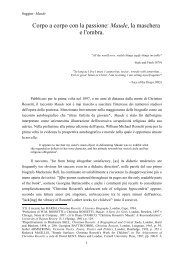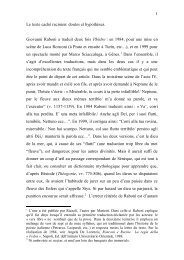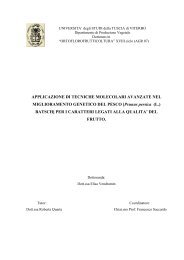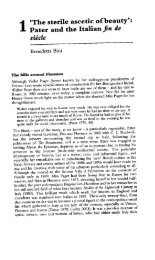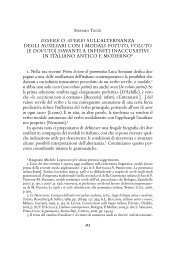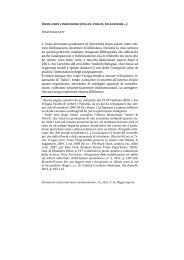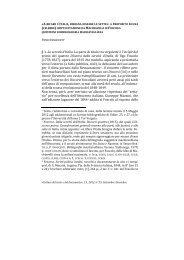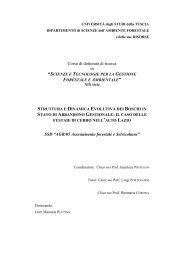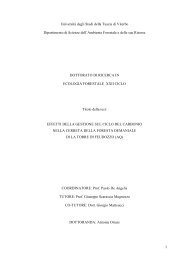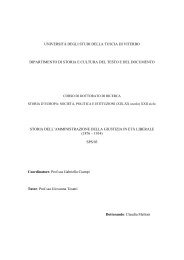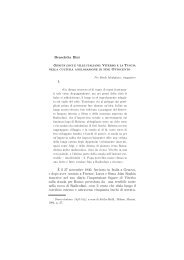drivers of soil respiration of root and microbial ... - Unitus DSpace
drivers of soil respiration of root and microbial ... - Unitus DSpace
drivers of soil respiration of root and microbial ... - Unitus DSpace
Create successful ePaper yourself
Turn your PDF publications into a flip-book with our unique Google optimized e-Paper software.
AG biomass (g m -2 )<br />
400<br />
350<br />
300<br />
250<br />
200<br />
150<br />
100<br />
50<br />
0<br />
26.04.2007<br />
15.05.2007<br />
30.05.2007<br />
16.06.2007<br />
03.07.2007<br />
12.07.2007<br />
Fig. 4 Changes <strong>of</strong> the aboveground (AG) <strong>and</strong> belowground (BG) biomass (± SE) in the course <strong>of</strong> the growing<br />
season 2007.<br />
An average contribution <strong>of</strong> <strong>root</strong>s to total CO2 efflux from <strong>soil</strong> amounted to 30%. However<br />
the range <strong>of</strong> variation in <strong>root</strong> <strong>respiration</strong> contribution to Rs varied significantly in course <strong>of</strong> the<br />
growing seasons from 2 to 70% (Fig.3).<br />
2.3.1. Diurnal variation <strong>of</strong> <strong>soil</strong> <strong>respiration</strong> <strong>of</strong> different origin<br />
Response <strong>of</strong> <strong>soil</strong> <strong>respiration</strong> <strong>of</strong> different origin to diurnal changes in <strong>soil</strong> temperature in 2007<br />
<strong>and</strong> 2008 is represented in figure 5. The first observation which is possible to make from the graphs<br />
is that any <strong>of</strong> <strong>respiration</strong> sources do not follow diurnal patterns <strong>of</strong> <strong>soil</strong> temperature <strong>of</strong>ten<br />
decreasing suddenly under the high <strong>respiration</strong> rates, independently from the period <strong>of</strong> the growing<br />
season when the measurements were performed (Fig. 5: ex. 15 June, 11 July, 19 August; 11<br />
November; 5 June; 2 August). Another important observation is that in different times <strong>of</strong> the day<br />
with similar temperatures <strong>soil</strong> <strong>respiration</strong> is different. Changes in SWC also failed to explain the<br />
diurnal variation in <strong>soil</strong> <strong>respiration</strong> fluxes, its fluctuations during the day were negligible (Fig. 6).<br />
04.08.2007<br />
20.08.2007<br />
08.09.2007<br />
23.10.2007<br />
AGb<br />
BGb<br />
05.11.2007<br />
2000<br />
1800<br />
1600<br />
1400<br />
1200<br />
1000<br />
800<br />
600<br />
400<br />
200<br />
0<br />
BG biomass (g m -2)<br />
43




